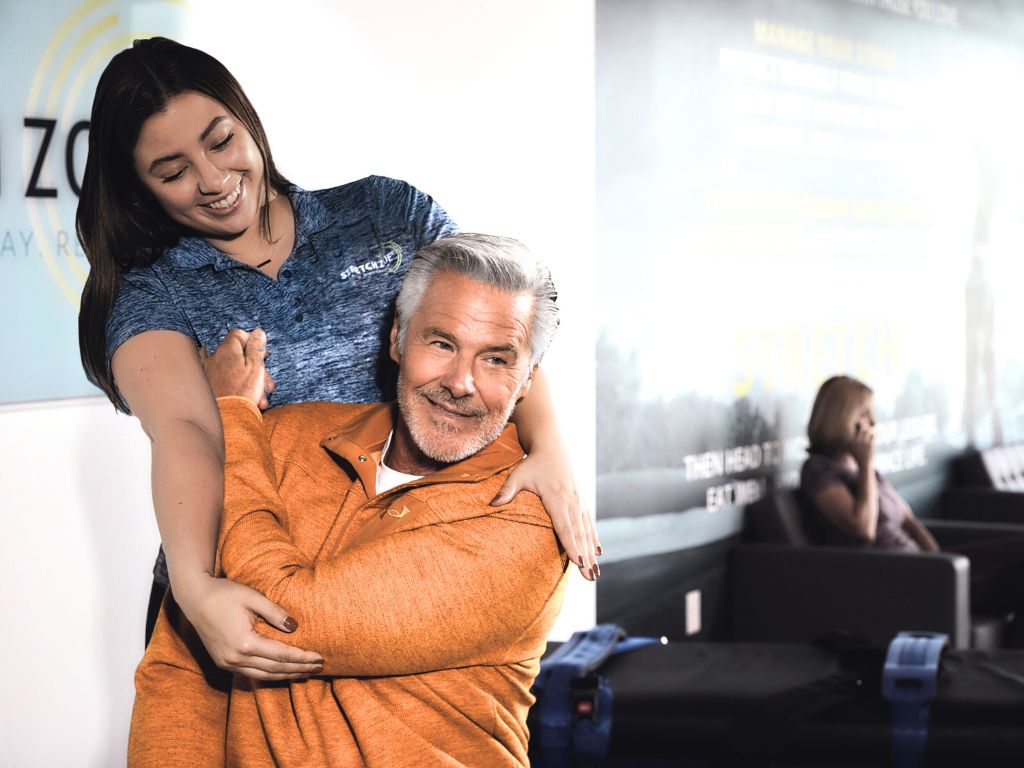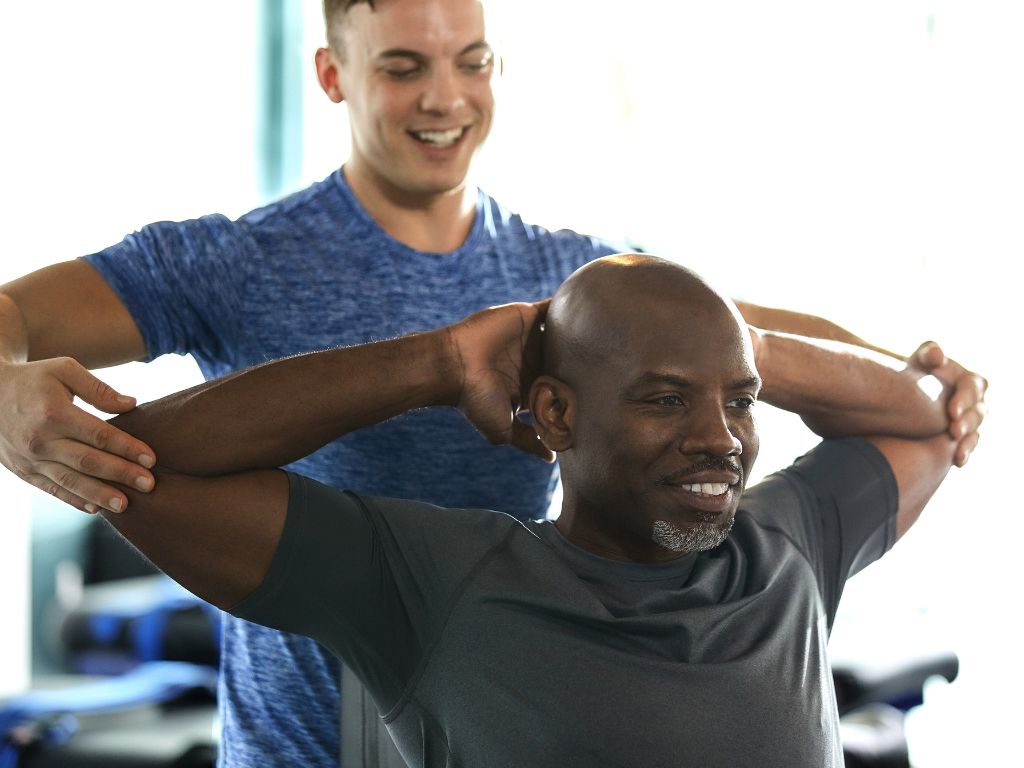
What You Need to Know About the Stretch Reflex
Stretching has great benefits for your health. It can ease muscle tension, improve circulation, and boost your overall flexibility. However, let’s be honest – simply going through the motions won’t give you the best results.
Effective stretching is a bit more complex than it might seem at first glance. To truly harness its potential for your back stretching exercises, you need a strategy. That strategy involves understanding and working with the stretch reflex. In this article, we’re here to shed light on what the stretch reflex is all about and how it can make a world of difference in your journey toward better flexibility.
An Overview of the Stretch Reflex
What Is the Stretch Reflex?
The stretch reflex is a response that happens automatically when your muscles are stretched. This reflex is part of your body’s rapid reactions, making sure your muscles don’t stretch too far, too fast. Just as you instinctively pull your hand away from something hot, your muscles instinctively tighten up when they sense a sudden stretch.
The Role of Muscle Spindles
Muscle spindles serve as sensing tools within our muscles. Their primary task is to sense alterations in muscle length and the speed at which the changes occur. To illustrate it better, imagine you are about to do back stretches, this action activates the spindles, causing them to send an electrical message to the spinal cord. This message prompts the activation of more motor neurons at the spinal level, which then sends another message back to the muscle.
This message instructs the muscle to contract with more force, reducing the pace at which the muscle is lengthening. This entire process constitutes the stretch reflex.
Why Do We Have It?
Maintaining Posture
This reflex serves a critical role in helping us stand tall and steady. When you lean to one side, the muscles on the opposite side stretch. Instantly, the muscle spindles in those muscles detect this lengthening and signal them to contract. This quick response aids in correcting your posture almost instinctively.
Preventing Muscle Tears
Another crucial function of the stretch reflex is to protect us from muscle damage. A classic example is the knee-jerk reflex. When a doctor taps your patellar tendon below your knee, your quadriceps muscles quickly stretch. The muscle spindles in your quadriceps sense this sudden change and immediately send a signal to contract those muscles. This action prevents overstretching. The absence of this reflex could indicate issues with your nervous system or receptor damage.
How the Stretch Reflex Can Limit a Deeper and More Effective Stretch
The stretch reflex can hinder our efforts to achieve a deeper and more effective stretch. This involuntary response, designed to shield us from overstretching, often clashes with our purpose during stretching routines.
As an example, when you perform back stretching exercises, a conflict arises between your conscious and subconscious brain. While you’re consciously trying to stretch your muscles, your stretch reflex (the subconscious brain) kicks in to prevent overstretching and potential injury. It’s like a tug-of-war between intentions.
Adjusting the Stretch Reflex
As we can see, though the stretch reflex has an essential role, it can unintentionally interfere with the quest for greater flexibility. Understanding its impact and discovering methods to harmonize with it is key. Let’s explore the components that contribute to optimizing the stretch reflex to benefit your goals.
Essential Elements for Adjustment
Mindful Stretch Duration
The time spent within each stretch session holds the secret to influencing the stretch reflex’s response. For example, engaging in static upper back stretching exercises – holding each position for a minimum of 15 to 20 seconds (or extending it up to 60 seconds) – encourages the reflex to release its hold. This extended duration enables your muscles to gradually adapt, diminishing the reflex’s inclination to intervene.
Embracing Subtlety and Control
Effective stretching revolves around finesse, not force. For instance, when approaching back stretching exercises, steer clear of abrupt, forceful stretches that can activate the reflex’s contracting mechanism. Instead, opt for a gentler approach, involving controlled and deliberate movements. This empowers your muscles to yield to the stretch without evoking the reflex’s defensive reaction.
Gradual Adjustments
Instead of wrestling with the stretch reflex, success lies in partnering with it. Progressing at a steady pace while respecting your body’s limits is key. Gradual adjustments provide your muscles with the opportunity to adapt and elongate without triggering a robust reflex response. By incrementally pushing your boundaries, you strike a balance that promotes improved flexibility without eliciting your body’s protective mechanisms.
Addressing the Stretch Reflex through Practitioner Assisted Stretching
Practitioner-assisted stretching offers a refined approach to adjusting the stretch reflex for more effective stretching exercises. Here’s how it works:
- Expert Insight: Stretch practitioners have in-depth knowledge about the stretch reflex and its interaction with various stretching techniques.
- Tailored Stretches: Each stretch is carefully customized to align with your body’s unique responses and limitations.
- Gradual Progression: This method involves a gradual increase in the intensity of stretches, allowing your muscles to adapt slowly and effectively.
- Reflex Avoidance: Stretch practitioners strategically adjust stretches to prevent triggering the stretch reflex’s defense mechanism.
- Controlled Movements: Deliberate and controlled movements are emphasized to prevent sudden and forceful stretches.
- Amplified Flexibility: Over time, practitioner-assisted stretching contributes to enhanced flexibility and a broader range of motion.
- A Collaborative Approach: Practitioner-assisted stretching is a journey that you undertake alongside skilled professionals, combining their expertise with your dedication to achieve optimal results.
Whether you’re a fitness enthusiast looking for improved flexibility, a person seeking the best back stretching exercises, or someone striving for better posture, stretch practitioners are your partners in progress. With their guidance, you’ll experience the benefits of tailored stretches and a method that prioritizes your body’s natural mechanics.
The Outcomes of Adjusting the Stretch Reflex
Enhanced Range of Motion
Fine-tuning the stretch reflex has a direct impact on your body’s range of motion. As you work on adjusting this reflex, your muscles become more pliable, allowing your joints to move through a broader spectrum. This newfound flexibility translates into a heightened ability to perform various activities with improved ease and grace.
Better Results from Stretching Sessions
The adjustment of the stretch reflex is a game-changer when it comes to the effectiveness of your stretching routine and your back stretching exercises. With the reflex no longer hindering your progress, you can delve into deeper stretches, accessing muscle groups that were previously difficult to engage. This adjustment paves the way for more fruitful and satisfying stretching sessions.
Balanced Progress and Avoidance of Strain
A well-adjusted stretch reflex offers a balanced approach to your flexibility journey. It allows you to make gradual and controlled progress, preventing the potential strain that can arise from forcing your muscles into extreme stretches. This harmony between pushing your limits and respecting your body’s natural responses fosters a sustainable stretching routine.
Greater Mind-Body Connection
Adjusting the stretch reflex encourages a stronger mind-body connection during stretching. You can adapt your stretches more effectively as you become attuned to your body’s responses and sensations. This heightened awareness leads to a more mindful and enjoyable stretching experience.
Enhanced Posture and Alignment
Adjusting the stretch reflex can contribute to better posture and alignment. As your muscles become more flexible, they support your body’s natural alignment, reducing the strain on joints and muscles. This improved posture enhances your overall appearance and helps prevent discomfort and potential injuries when performing back stretches and more.
Interested in Back Stretching Exercises?
If you’re on a quest to enhance your flexibility and achieve better mobility, Stretch Zone is here to assist you. Our unique approach revolves around the Stretch Zone Method, designed to revolutionize your stretching journey. Unlike traditional methods that solely target flexibility, we prioritize adjusting the stretch reflex to help you gradually increase your active range of motion.
If you’re an athlete seeking peak performance, a person looking to handle discomfort through effective back stretching exercises for the lower back, or simply want to move with greater ease, our expert stretch practitioners have you covered. Contact us and schedule your free session today!


